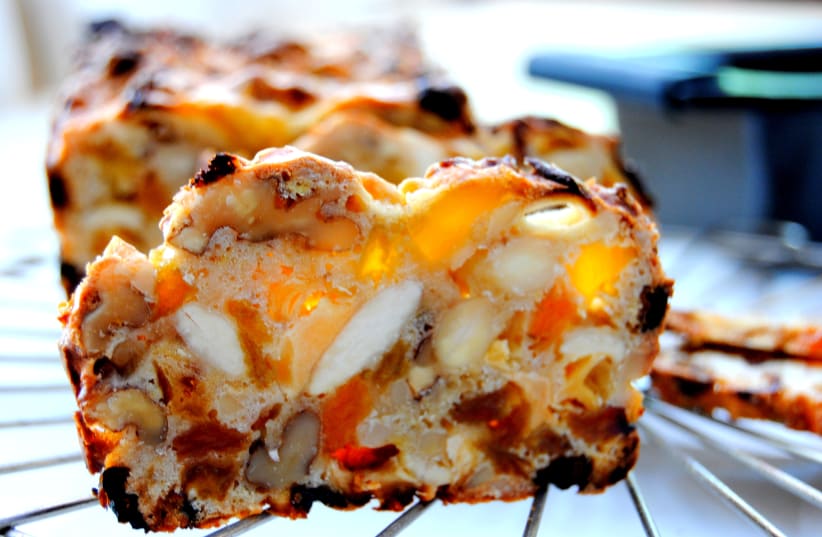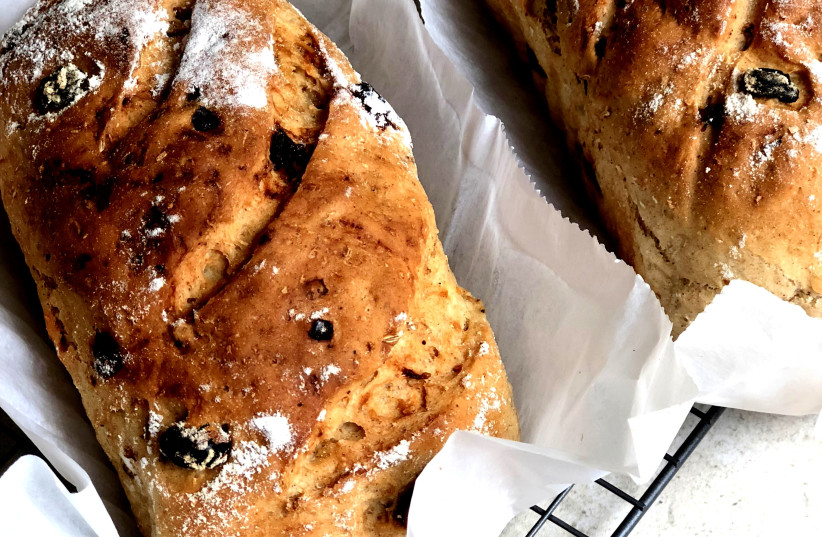For a few weeks already, I’ve seen beautiful displays of dried fruits in shops around the country in preparation for Tu Bishvat, which falls on Sunday night. Most of the dried fruits we find in stores are processed using sulfur dioxide, a preservative that helps the fruit slices keep their original bright color, remain soft and increase their shelf life. In addition, huge amounts of sugar are added to dried fruit. Consequently, it is extremely important to rinse dried fruit before eating or adding them to cooked foods.
Alternatively, you can find organic dried fruits that are dried naturally without any added preservatives or sugar. They may not look as bright or appetizing, but they taste much better and retain more of the fruits’ original nutritional value, without the added sugar.
For more stories, click here >>
Another method of drying fruit, which not many people have heard about, is home-dried fruit using a dehydrator. Actually, it’s quite easy to dry fruit on your own. You can pretty much take any fruit you have at home, cut them, dip them in a little lemon juice and place them on trays that fit into a dehydrator. Arrange the fruit slices tightly and squeezed next to each other on the trays. Finally, all you have to do is turn on the machine and wait for them to come out dried. It’s really as simple as it sounds.
You can store home-dried fruits in glass containers in your fridge. If you place them on a shelf in a pantry, they will quickly become moldy. Nowadays, you can easily find small mosquito netting that can be placed on top of the trays of dried fruits to protect them from mosquitoes and other insects.
We are used to eating lots of dried fruit on Tu Bishvat, but there’s really no reason we can’t eat them all year long. For example, prunes, dried figs and apricots turn any beef dish into a sweet delicacy.
As well, you can add fruit to all sorts of dishes and baked goods, which adds a lot of juicy sweetness. It took me a long time to get used to the texture of fresh fruit baked inside of cake, but now I love it. I even like to keep a stash of home-dried fruit in my fridge to satisfy my cravings for it.
Tu Bishvat this year, I’m offering my readers three recipes that call for dried fruit. The first one is Fancy Rice with Dried Fruit, which is the perfect complement to any beef dish. The recipe calls for basmati rice, dried fruits and pine nuts, which really make this dish tasty.
The second recipe is Rich Fruit Bread. I normally bake rolls or challot for Jewish festive days, but for Tu Bishvat I love to make this special fruit bread that is packed with fruit. It tastes almost like cake!
The third recipe is My Decadent Dried Fruit Cake, which is superb when eaten with a glass of piping hot tea. This cake is so tasty and easy to make, that it should become one of your go-to cakes you can make all year long. Just be aware that when you’re mixing the batter it will feel like it’s the wrong consistency, but have no fear, in the end the cake will come out perfectly! When it has cooled, cut super thin slices and you will see a cross section of all the wonderful fruits packed inside the cake. A side benefit of this cake is that it can be stored in the fridge for up to one month.
My Decadent Dried Fruit Cake
Makes one 30 cm.-long loaf.
- 150 g. walnuts, pecans or almonds (or a combination of all three)
- 200 g. dried fruits (apricot, cranberry, raisin, papaya, pineapple or pear)
- 5 Tbsp. demerara sugar
- 7 Tbsp. self-rising white or whole-wheat flour, sifted
- 2 large eggs
Place all the ingredients in a large bowl and mix well (don’t worry if it seems like there aren’t enough eggs in the dough).
Transfer the dough to a well-greased loaf pan and flatten. Place the pan on the middle rack in the oven and bake at 180°C for 35-40 minutes or until the cake turns golden brown.
Let the cake cool down, then slice thinly using a serrated knife.
Level of difficulty: Easy.Time: 50-60 minutes.Status: Parve.
Fancy Rice with Dried Fruit
Makes eight servings.
- 2 cups basmati rice
- 3 tsp. salt, or according to taste
- 2 Tbsp. canola oil
- 1 Tbsp. walnut oil
- 2 Tbsp. olive oil
- 10 prunes, pitted and sliced into strips
- 10 dried apricots, cut into cubes
- 50 g. raisins
- ¼ tsp. sweet paprika
- ¼ tsp. spicy paprika
- 4 cups water
- 25 g. butter or margarine, cubed
- 50 g. roasted pine nuts or sliced almonds
Rinse the rice well at least three times. Place the rice in a large bowl and cover with boiling water. Add 2 tsp. of salt and let the rice sit for 30 minutes. Then, rinse and dry the rice with a towel.
Heat the oils in a large pot and add the rice. Sauté the rice for a bit and then add the prunes, apricots, raisins, both types of paprika and the rest of the salt. Stir.
Add the butter or margarine and stir. Bring to a boil and then lower the flame and cover the pot. Cook for 10 minutes until all of the liquid has been absorbed. Transfer the rice to a serving platter and sprinkle the pine nuts or almonds on top.
Level of difficulty: Easy.Time: 50 minutes. Status: Parve, or dairy if using butter.
Rich Fruit Bread
Makes two 30 cm.-long loaves.
- 300 g. (2.5 cups) white flour, sifted (can use spelt flour instead)
- 100 g. (1 cup minus 1 Tbsp.) rye flour, sifted
- 30 g. fresh yeast, or 1 ¼ Tbsp. dry yeast
- 2 Tbsp. honey
- 1 cup water
- 50 g. margarine or butter, softened (can use oil instead)
- 1 tsp. salt
- 1 tsp. cinnamon
- ½ tsp. aniseed
- Pinch of nutmeg
Dried fruit mix:
- 2 dried dates or prunes, chopped into little pieces
- 3 dried figs, chopped into little pieces
- 3 dried apricots, chopped into little pieces
- 75 g. small light raisins or unsweetened dried cranberries
- 25 g. coconut
- 2 Tbsp. flour, sifted
Place half of the flours, yeast, honey and water in the bowl of an electric mixer and mix well. Cover the bowl with a towel, place in a warm spot and let the dough rise for four hours.
Knead the dough then add the rest of the flours, yeast, water and honey into the bowl and mix well. Add the butter, margarine or oil, salt and spices, and mix for 10 minutes until the dough is soft. If necessary, you can add another ¼-½ cup of water. Cover the bowl and let the dough rise in a warm spot for one more hour or until it doubles in volume.
In a separate bowl, mix all the dried fruits together.
Knead the dough a little more and add the fruit mixture while continuing to knead. Continue kneading the dough until it’s mixed well.
Split the dough into two sections and place each in a loaf pan. Cover with towels and let the dough rise for another 20 minutes.
In an oven that has been preheated to 190°C, bake the breads for 35-40 minutes or until they turn golden brown.
Level of difficulty: Easy-medium.Time: Two hours, plus initial rising time. Total time is four hours.Status: Parve, or dairy if using butter.
Translated by Hannah Hochner.

